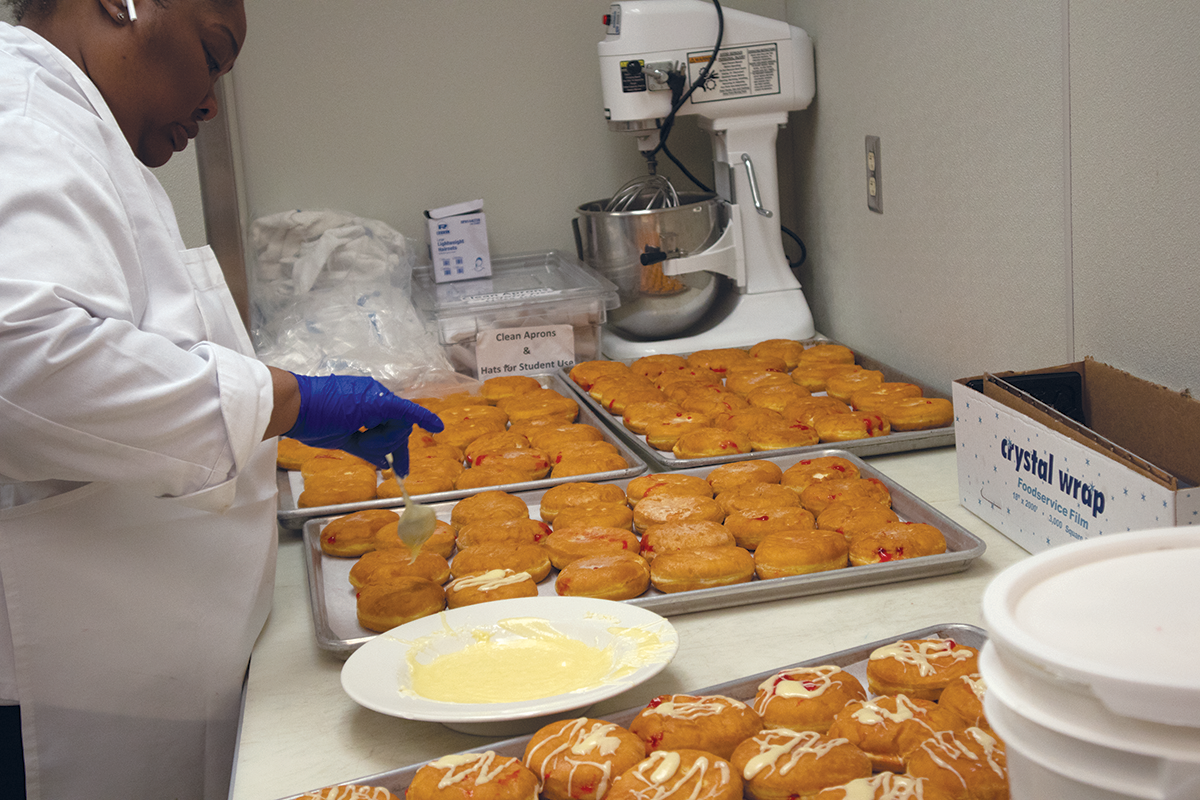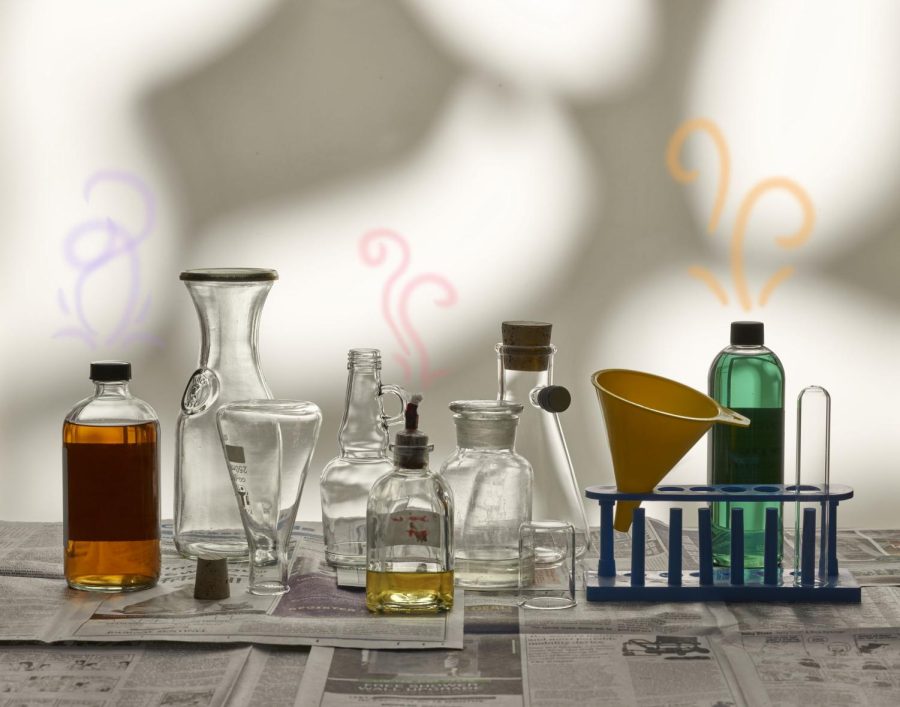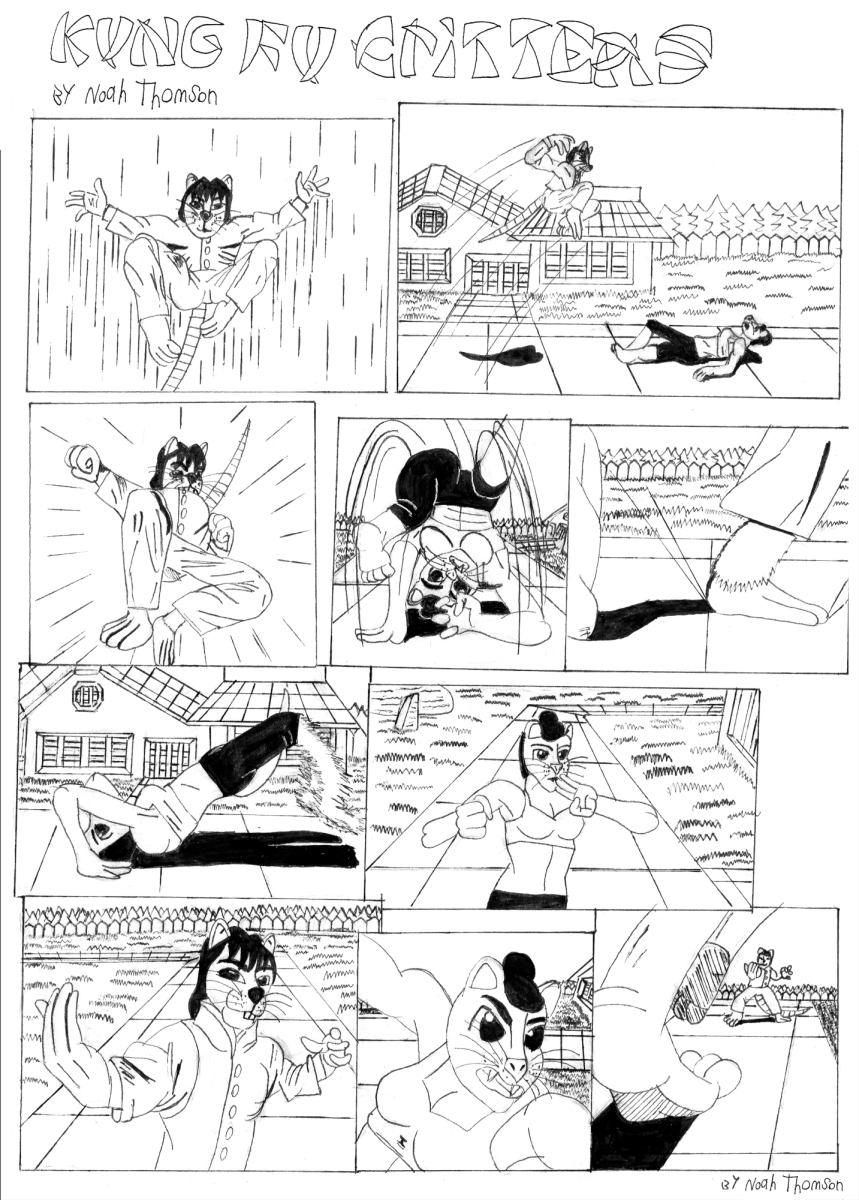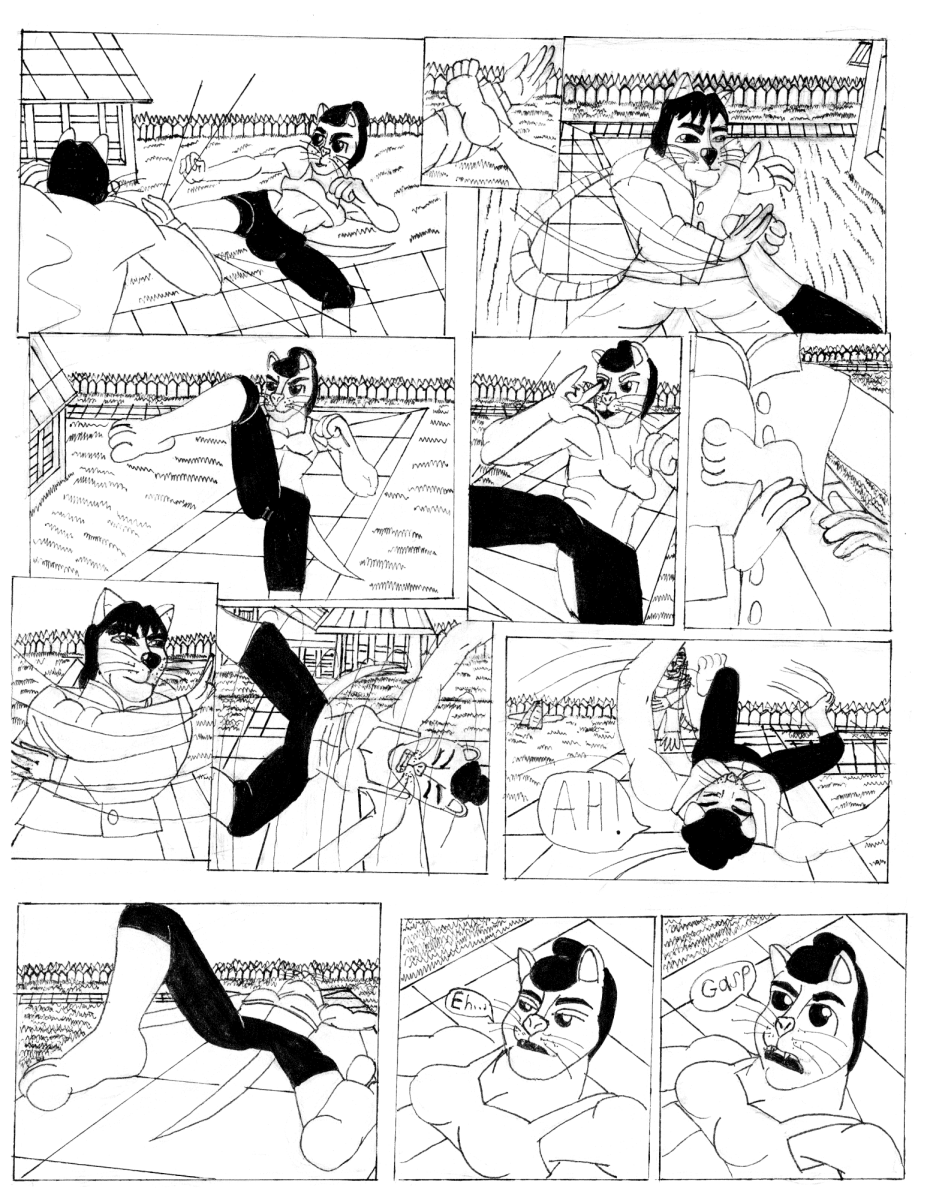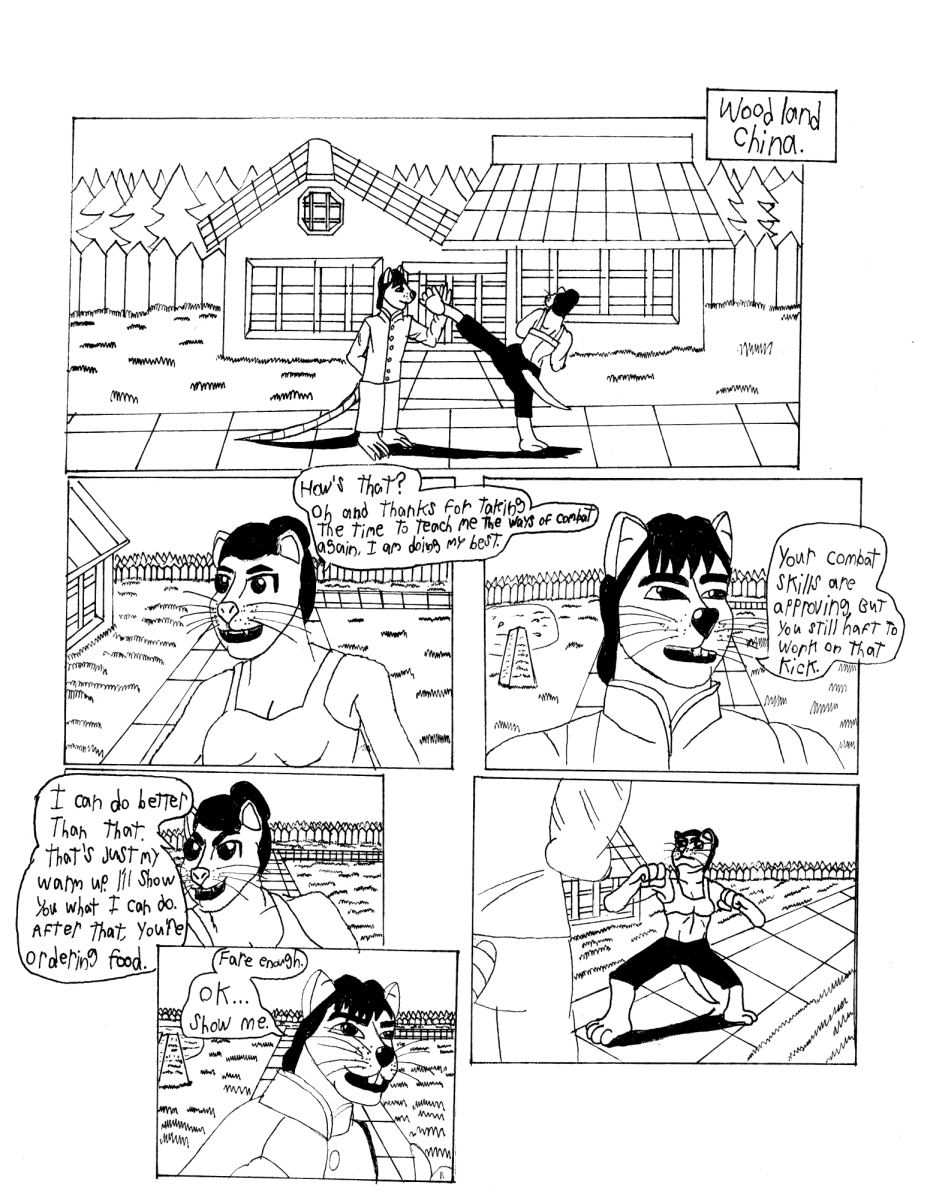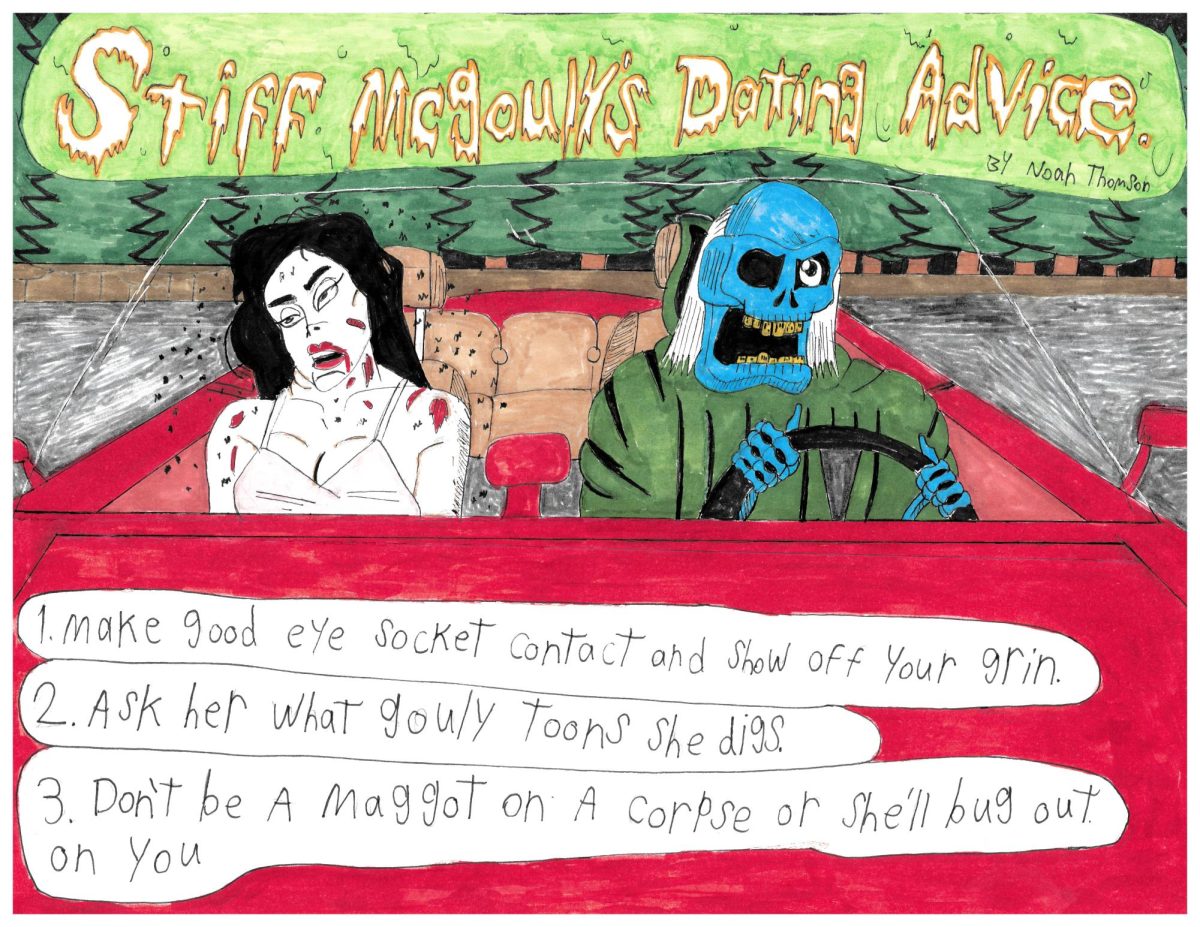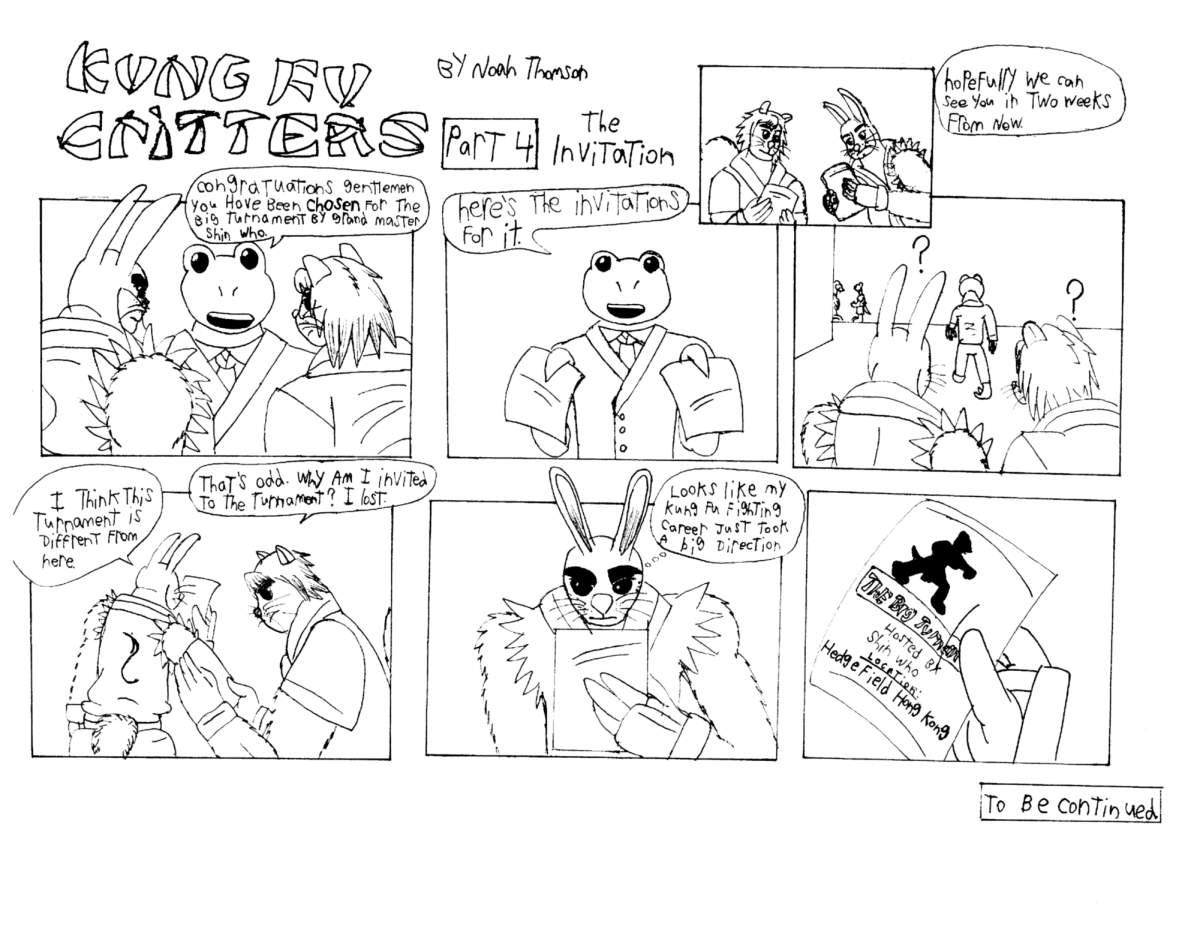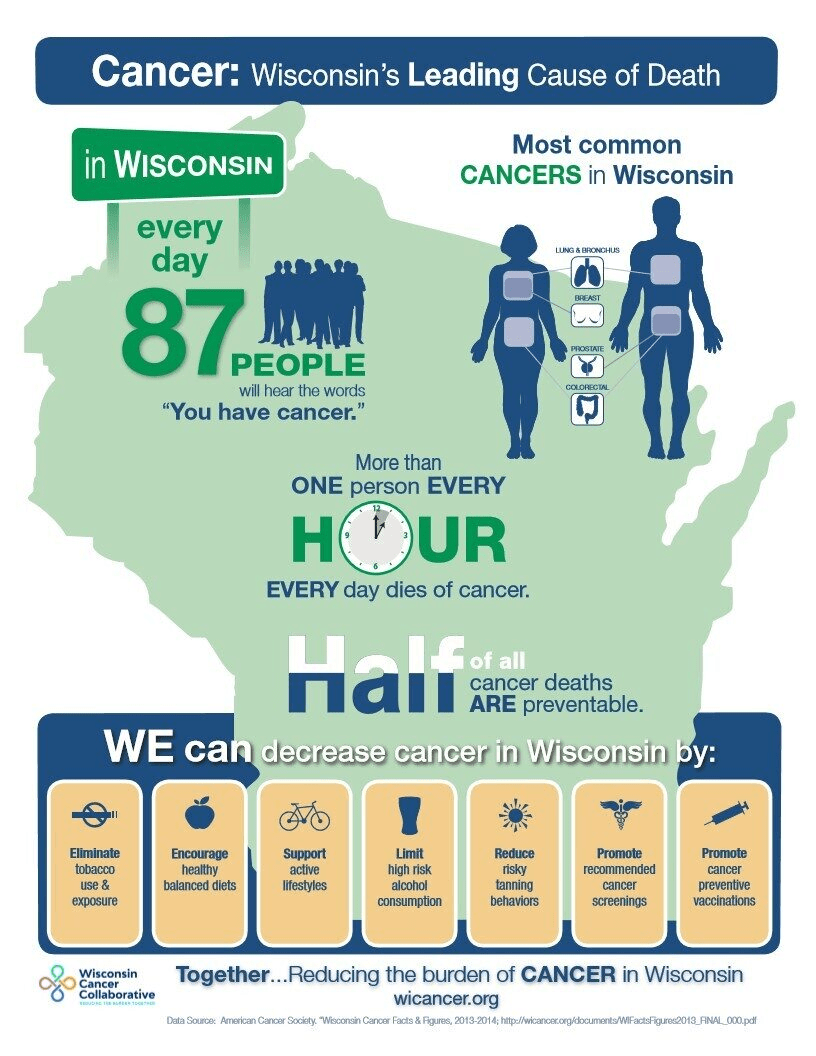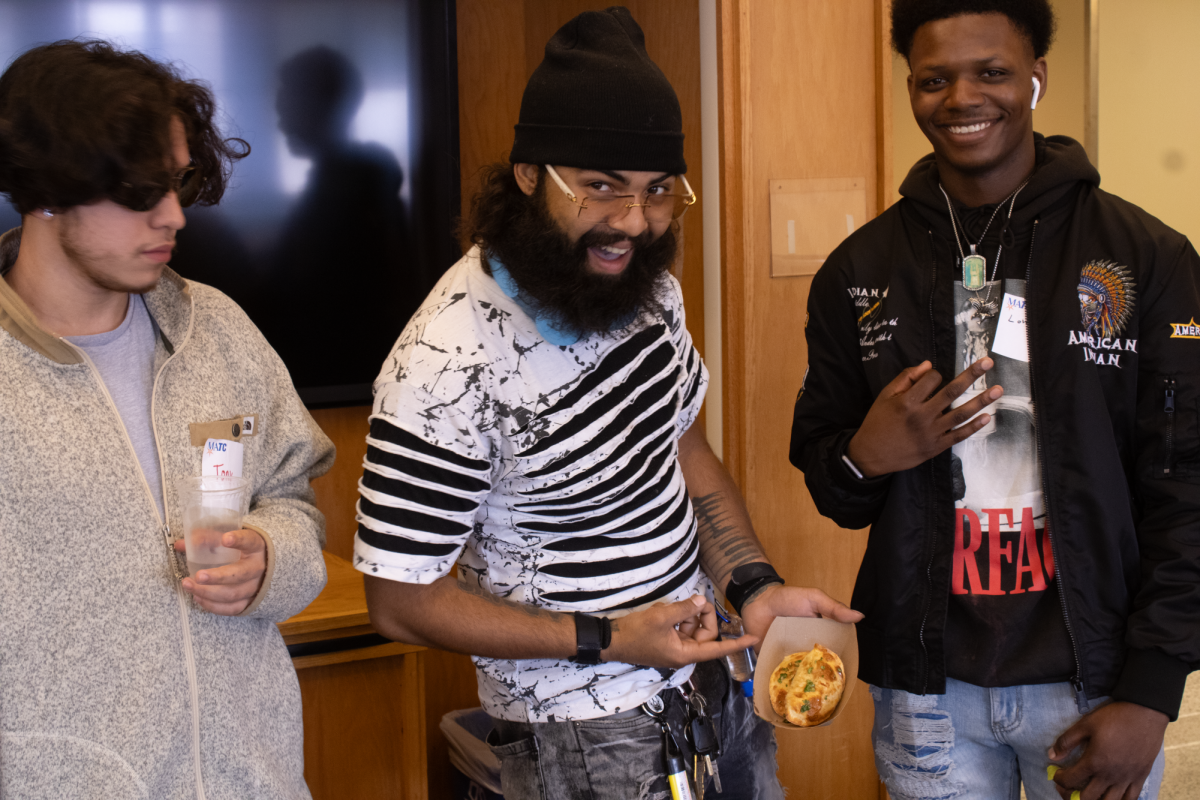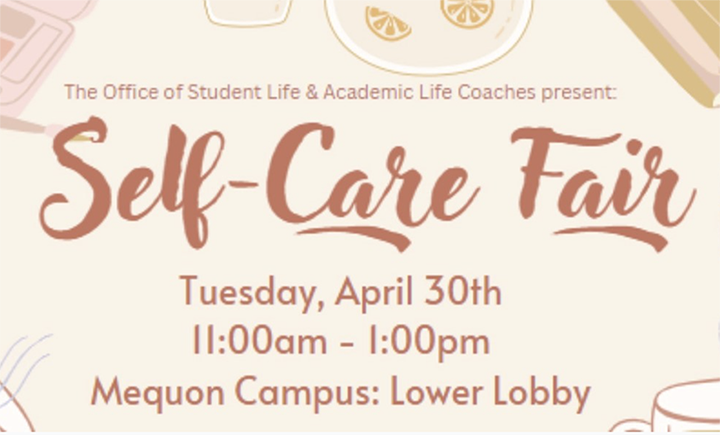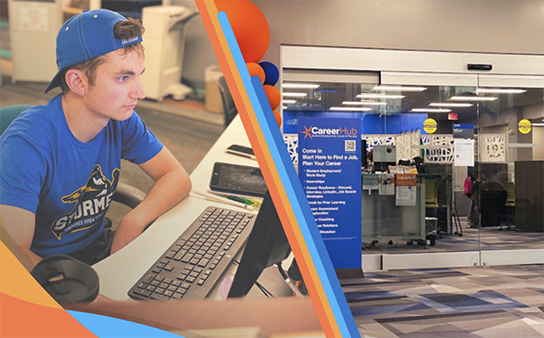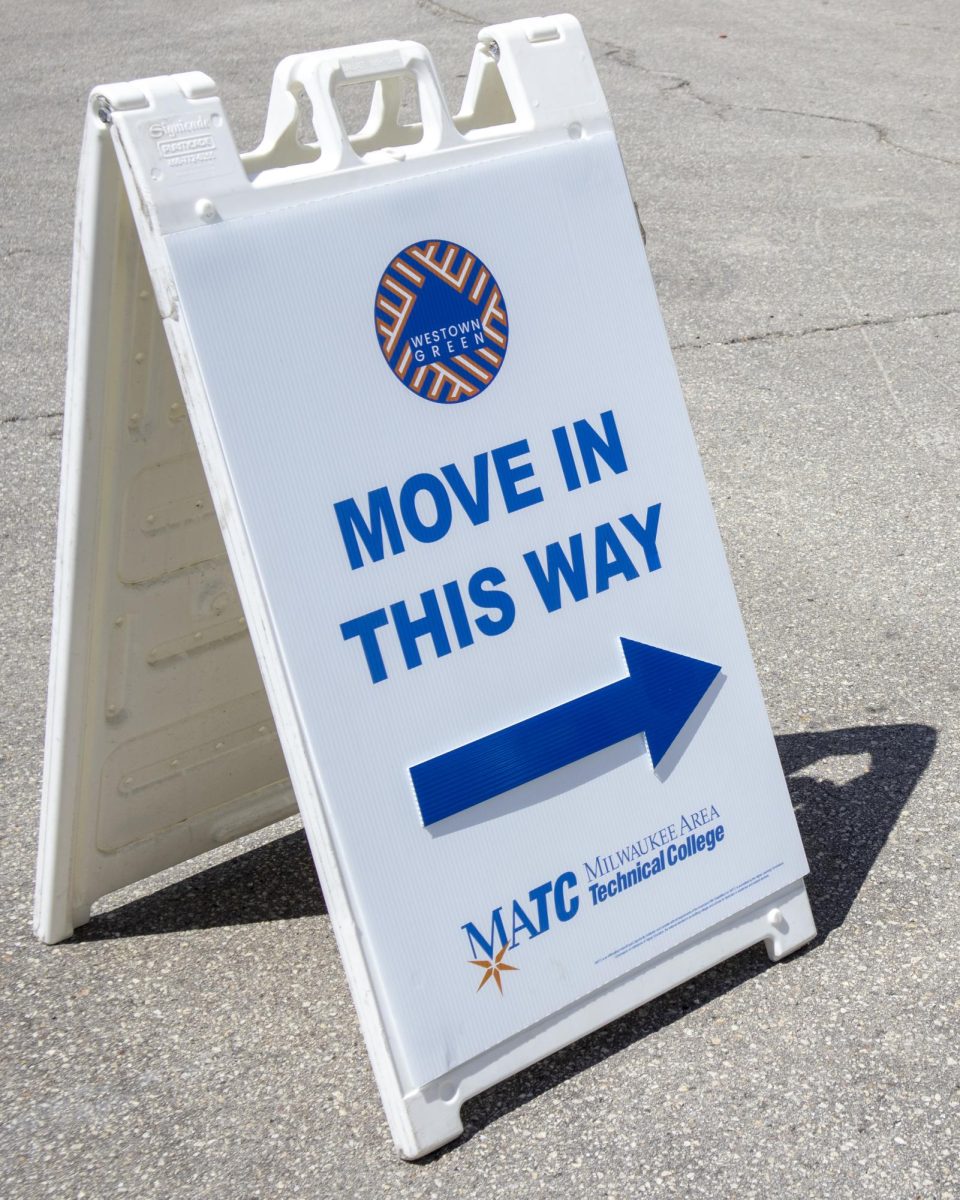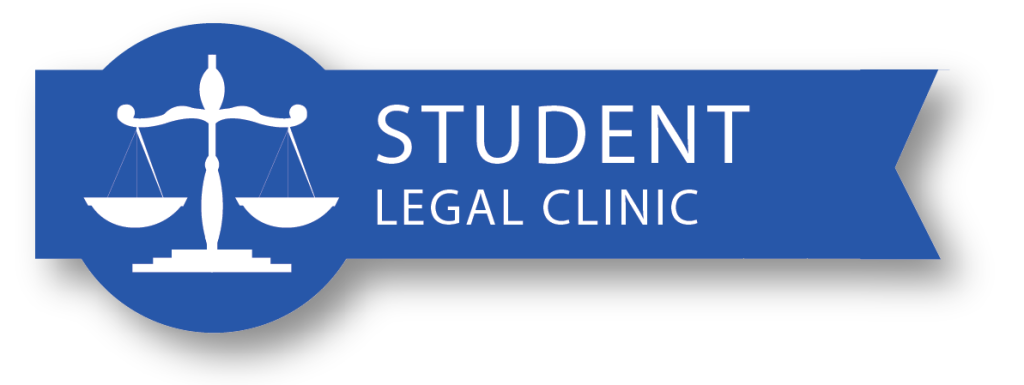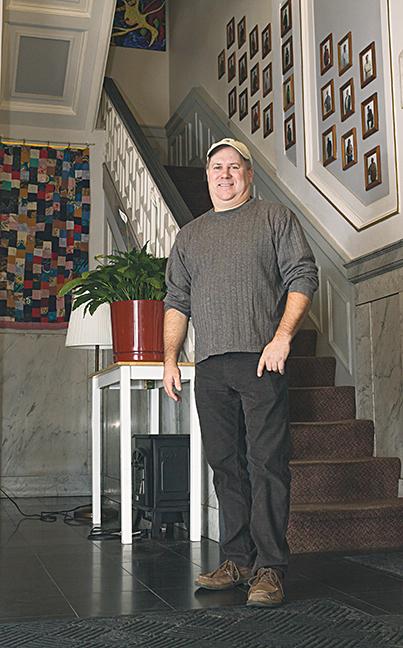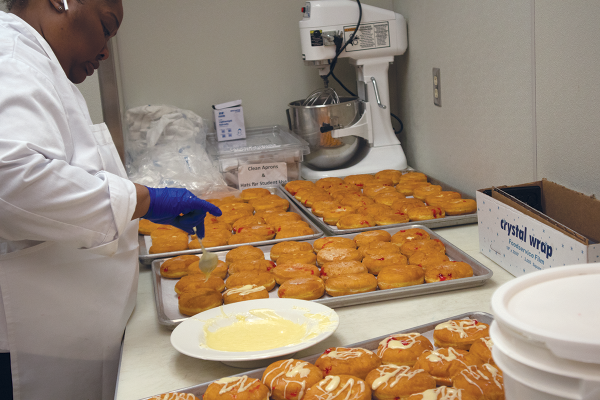Rauth’s book focuses on life improvement
Photo by Jamie Cannestra/Times
Jim Rauth stands in the entryway to the Grand Avenue Club. The Grand Avenue Club is the where Rauth drew his inspiration to write his book, “What Color Is Your Brain Scan?” He is currently enrolled in the human services program at MATC.
Personal empowerment can mean a lot of things to each person, but recognizing one’s strengths and strengthening one’s weaknesses entails a level of personal insight that is nothing less than powerful. Assisting others to reach this accomplishment for themselves is even more meaningful in an age where help from others is in short supply; however this is exactly what student author, Jim Rauth, hopes to do with his first book, “What Color Is Your Brain Scan?”
Rauth is in the human services program specializing in AODA (Alcohol and Other Drug Addictions) and is working to receive his associate’s degree this May; and like many other students in this program, Rauth cites his own life experience as what lead him to choose this path. Struggling with addiction and depression is not an uncommon story in today’s society, yet understanding the difficulty of overcoming this adversity is the reason that many individuals dedicate themselves to this profession. Such is the case with Rauth, who overcame his own personal issues with the help of one of life’s best natural remedies for healing: laughter.
Before coming to MATC, Rauth attended a stand-up comedy class to alleviate his life stresses, which eventually lead to some of his own performances and culminated in his enrollment in a comedy college. Rauth currently teaches stand-up in Milwaukee and Chicago, believing that comedy is an essential tool for healing; a belief that resonates in his role in the counseling of others to this day.
“Are you an egg or a wheel?” Rauth’s book asks readers in a unique quiz designed to recognize eight specific attributes of one’s life in order to observe what areas are their strengths and in what areas a person may lack. The quiz divides a circle (or a wellness wheel) into eight dimensions and suggests that when properly balanced the wheel could roll easily throughout one’s life like a steam train. When one or more of these eight dimensions are unequal with the other, due to an imbalance with a particular aspect of a person’s life, this shape turns into an oblong or egg-like shape; which does not help with the forward momentum many of us could benefit from.
The idea of the wellness wheel, while not necessarily new, is in this case derived from the AODA program’s use of brain scan to illustrate what areas of the brain light up when a person is shown an image of the object they have an addiction to. According to Rauth, however, a person does not need to undertake the expensive technology needed to scan a person’s brain or even be addicted to drugs or alcohol simply to find out what areas of our lives are imbalanced.
A wellness wheel is a method of focusing on specific areas of a person’s life by dividing a circle into six, seven, or sometimes eight different parts of the ‘self’ in order to give attention to the areas in which we could improve or the areas in which we may give too much focus on. The eight dimensions listed in his book include: physical, recreational, social, intellectual, spiritual, environment, financial, and emotional.
Rauth’s book reminds us that progress is not about perfection, progress is about keeping yourself on track and Rauth hopes that the guidelines in his book will help his readers to plan out their own path and maintain healthy, balanced decisions. “I’d like to add another dimension to this book, a ninth dimension,” said Rauth, “a dimension about keeping a positive attitude!”
Keeping with this mindset, Rauth is hopeful to see a “grand-scale” effort where groups or classes form and people come together to continue the push for progress on both a collective and personal level.
I’d like to add another dimension to this book, a ninth dimension, a dimension about keeping a positive attitude!
— Jim Rauth, student author


